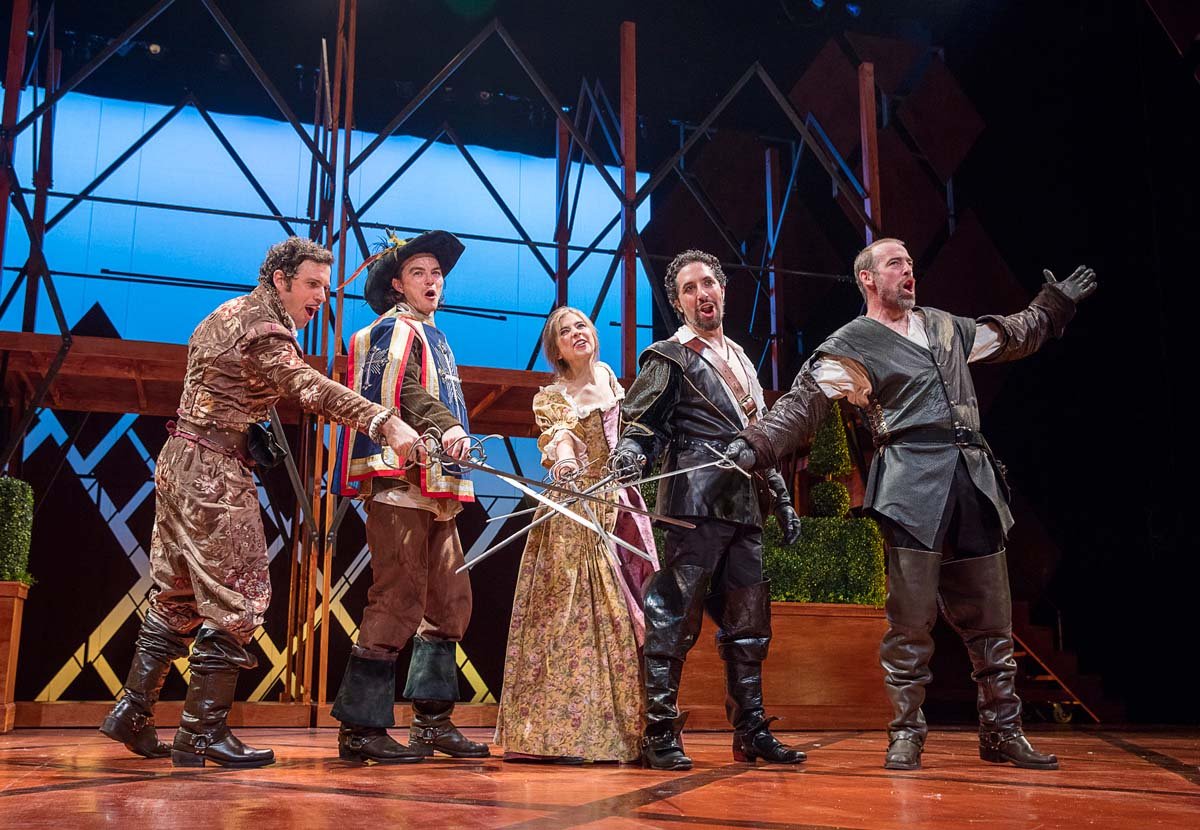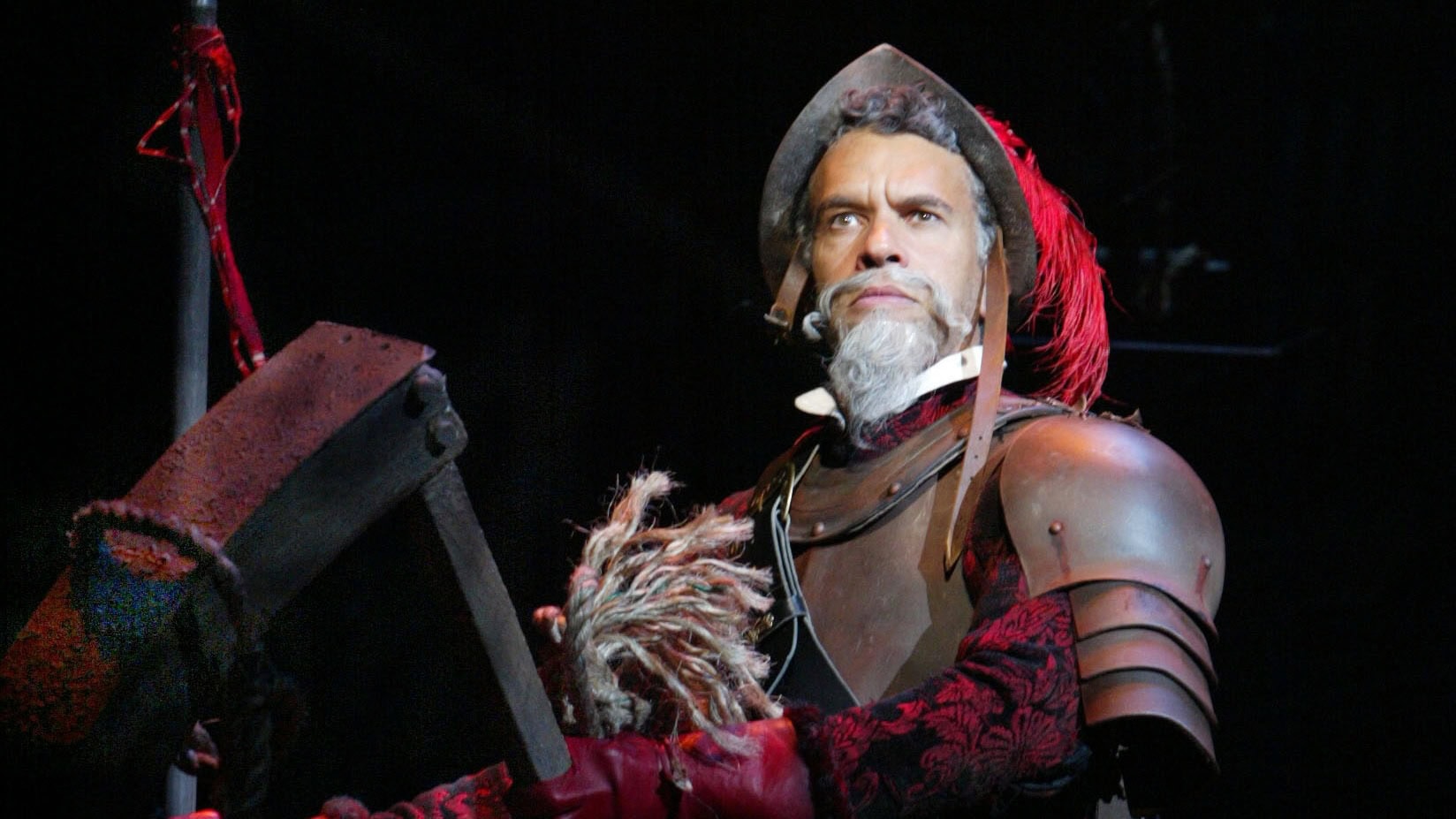
Ken Ludwig’s The Three Musketeers is an adaptation based on the time-old tale of friendship, loyalty and above all, honor. Here, Ludwig dives deep into why he decided to revamp the classic by Alexandre Dumas for the modern stage.
…
You first wrote an adaptation of The Three Musketeers in 2006. Why?
I came to write the original adaptation in a sort of roundabout way. The Bristol Old Vic, one of the most historic theatres in England (it first opened in 1766), was going to produce my adaptation of Treasure Island in the winter of 2006, but then they learned that another theatre in Bristol was going to produce the same play that same season.
The Artistic Director of the theatre, Simon Reade, called me to say that while they couldn’t produce Treasure Island, they still wanted to do one of my plays, and they wanted to do an adaptation of a classic novel. Would I consider adapting another novel, and do it in the next month or two? Indeed, they had to announce the name of the new play within a week, so could I choose a title right away, then go away and write the damn thing.
Of course, I said yes. Who wouldn’t? The Bristol Old Vic? Be still my heart.
He threw some titles at me — I remember him suggesting A Thousand And One Arabian Nights and Ivanhoe – but none of his suggestions rang any bells for me, so I took a stroll around my library and saw a shelf filled with novels by Alexander Dumas. The Count of Monte Cristo. Twenty Years On. And then I saw my much-loved and well-battered copy of The Three Musketeers and I was suddenly in love.
I’ve admired the novel since I was in my teens. And I’ve loved many of the film adaptations, especially the great epic with Michael York, Oliver Reed, and Raquel Welch. So I thought, why not? Let’s give it a try. Alas, what I failed to remember was that the book is 750 pages long, so I had my work cut out for me.
The next four weeks were filled with lots of reading and lots of writing, but in the end, I was thrilled that I chose it. The story is dramatic, funny, sexy, and filled with some of the most glorious characters in Western literature. Athos, Porthos, Aramis, and D’Artagnan are no longer just characters in a novel. They’re icons. They’re mythic.
A couple of months later I found myself in a room with director Tim Sheader, who staged the play to a fair-thee-well that fall. And I’m glad to say that it was a whopping success, with a magnificent young cast, many of whom became stars soon after.
What prompted you to revise the script last year?
Lately, I’ve been thinking about revising a number of my plays – to improve lines and scene here and there — and then, about two years ago, I received a call from my dear friend and top-notch director/fight- choreographer, Rick Sordelet.
Rick called and said that he had a new idea for how to stage my adaptation of The Three Musketeers, and would I consider taking a re-look at some sections of the play. He had ideas for clarifying some of the turning points in the story and also strengthening the love story between D’Artagnan and Constance. My response was a resounding yes. I was all ears. And Rick dazzled me with his cleverness, as always.
As I was doing the rewriting, Rick called Patrick Mulcahy, the Producing Artistic Director of The Pennsylvania Shakespeare Festival, and we were off and running. Within a year, the premiere production of the new script, directed by Rick, was up and running at PSF with a stellar cast, and the play was a hit. Since then, Rick has directed the new script a second time, at the New Jersey Shakespeare Festival, and again, his work was magical.
Has the overall plot shifted?
No, the plot has stayed the same as the first time around and has remained faithful to the original novel. However, as any reader of the novel can see, the action of the play primarily encompasses only about the first quarter of the novel.
Are there any new scenes?
There is one new scene: it’s between D’Artagnan and Constance. Rick suggested that the more I strengthen the love story, the more it would pay off at the end, and I thought he was right. One of the other changes had to do with D’Artagnan’s horse. In the novel, he is a source of ridicule: some of the other characters mock D’Artagnan about the horse and it precipitates an important fight in the play. The problem was that — not surprisingly — the horse was always off-stage in the original version of the play and so the jokes about him never quite landed. I ended up giving D’Artagnan a ridiculous hat instead, a hat that his father wore as a musketeer and which he gives D’Artagnan when he sends him off to Paris. The hat is visual and now the jokes land. Horse to hat. In retrospect, it feels so simple.
Are there any new characters in the new version?
Yes, a small one, Septime, the servant to the Queen. In the new love scene, he is waiting to take Constance back to the Queen and makes a nuisance of himself. He was lovely to write.
Does D’Artagnan still have his sister Sabine in this version?
Yes, absolutely. When I first conceived the play, I was struck with how male-centric the story was. Constance and Milady have substantial roles to play in the novel, but all the swashbuckling is centered on the boys. So I thought why not give D’Artagnan a sister who has all the same hopes and dreams of being a musketeer. Like all sisters, she drives her brother D’Artagnan a little crazy; he feels protective of her and she wants to go her own way. And, as you know if you’ve seen my adaptation, she ends up being full of joy, full of hope for the future, relentlessly loyal to her brother and her cause. In addition, she turns out to be just as skilled with a sword as her brother — and she ends up saving the day.
Anything else you’d like to add?
Only that it’s been a joy to see all the new productions of the play lately. Many of them have been part of Shakespeare festivals, many have appeared in regional theatres, and there have been lots in high schools, colleges, and community theatres. It does my heart good.
…
To purchase your copy of Ken Ludwig’s The Three Musketeers, click here. For performance rights, click here.
(photo: Lee A. Butz. Pennsylvania Shakespeare Festival’s 2017 production of Ken Ludwig’s The Three Musketeers, featuring (l to r): Zack Robidas, Sean Patrick Higgin
s, Stephanie Hodge, Alexander Sovronsky, and Ian Merrill Peakes.)

“The Impossible Dream” – An Anthem of Hope

In the Spirit: Plays and Musicals Based on A Christmas Carol

